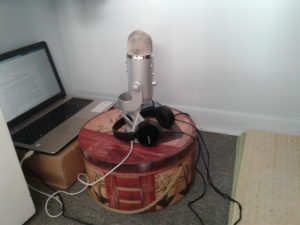Understanding the Middle Passage (often called the Mid-life Crisis)
This is an older video interview that I return to again and again. It remains relevant. I recommend starting one minute in (1:00) to avoid the chaotic music and aerobic dancers of the 1980’s which can distract from the discussion that follows.
The Ups and Down of Learning to be Digitally Literate
I had an interesting and challenging few days this week trying to transfer a large audio file to someone else through Wetransfer. I’m not really familiar with this file-sharing program, but since the audio file was very large, I was told that this was the best and quickest method to use. Apparently, this should have been straightforward process, but it turned into a preoccupation and at least one sleepless night. Wetransfer couldn’t complete the process despite many attempts.
I Could Drink a Case of You – A Joni Mitchell Grocery List by Leanne Shapton
https://wepresent.wetransfer.com/story/literally-leanne-shapton/
I discovered this story while trying, albeit unsuccessfully, to transfer a very large audio file using WeTransfer. The story popped up, and I had to read it because I love Joni Mitchell. It’s a lovingly illustrated story, by Leanne Shapton, which incorporates some of Joni Mitchell’s food-related song lyrics and Leanne’s personal menu. Leanne doesn’t like to cook, preferring restaurant meals, but she had little choice but to resign herself to preparing meals for her daughter and herself during the Pandemic since restaurants were and continue to be off-limits.
“Mechanical Draftsperson”
Musician Yoko Sen became determined to transform the hospital soundscape after a harsh hospital stay
https://www.cbc.ca/radio/day6/u-k-vaccine-rollout-why-seth-loves-christmas-ghost-stories-a-musician-takes-on-hospital-noise-and-more-1.5835992/hospital-noise-is-hurting-patients-and-caregivers-these-sound-designers-want-to-change-that-1.5836011
Imagine a hospital stay in which the background noise was not the constant or intermittent sound of buzzers, beeps, bells, pings, etc.
Instead, imagine the sound of tranquil music, ocean waves, bird song, the sound of a breeze through the trees, a soundscape that actually facilitates healing.
Dancing Her Way Through Life -Twyla Tharp, American Dancer and Choreographer
Definitely worth a listen: https://www.cbc.ca/radio/q/thursday-dec-10-2020-colman-domingo-twyla-tharp-and-more-1.5835597 (Her interview begins at 25:00)
Twyla says, “Being as strong as you can possibly be physically your entire life is a good investment for the long term.” You can hear the strength in her voice as she advocates for movement throughout the life cycle. She says that the disease we suffer from is denial of aging rather than aging itself. So, hop on your bicycle (when spring returns) and, in the meantime, walk, run, stretch, skate, ski, weight-lift, dance, do yoga, Tai Chi, etc. Find something you love that feeds your heart and soul and keeps your body moving.
I’m off to dance in my living room to my favourite music, The Cranberries singing ‘Linger.’
Karin
Out of the Closet and Back in Again
I’ve been editing my podcast and, after many frustrations, I’ve come to love editing more than recording. However, through editing, I discovered the need to re-record certain words that were unclear due to inaudible prefixes; thereby, giving some statements the opposite meaning. Well, I just couldn’t let that go!
So, I pulled out the big old empty suitcase and the large empty box that I’m saving for an imminent move that will likely be initiated by my landlord as he tries to evict the six remaining tenants of an apartment building equipped with 19 apartments. How much of Montreal’s housing crisis is due to similar evictions and empty apartments slated for gentrification? I digress.
I re-recorded the unsatisfactory sentences but when I inserted them into the perfect spots, they were too soft and hollow-sounding. I need to re-record them to my satisfaction. So, I will try again ensuring that the volume is the same as the original recordings and, hopefully, the hollowness will also be gone.
Wish me luck.
Karin
Stories from the Womb of my Closet

As I work through the creation of my first podcast, I’ve been paying attention to the process which finds me starting, stopping, and then procrastinating before getting back to it. What are these internal and external barriers that catch me up and hold me in place, not doing what I need to do?
George Kinloch – Banking on Life
 George Kinloch – Born in Glasgow, Scotland, Kinloch came to Canada in 1952, working for the Dominian Bank. After retirement at 62 he remained active with his Scottish roots, in organizations such as the Sons of Scotland and The Black Watch. He also became involved in the arts, managing the Mountain Playhouse at alongside Joy Thompson, who influenced the careers of renowned actors Christopher Plummer and William Shatner. (more…)
George Kinloch – Born in Glasgow, Scotland, Kinloch came to Canada in 1952, working for the Dominian Bank. After retirement at 62 he remained active with his Scottish roots, in organizations such as the Sons of Scotland and The Black Watch. He also became involved in the arts, managing the Mountain Playhouse at alongside Joy Thompson, who influenced the careers of renowned actors Christopher Plummer and William Shatner. (more…)